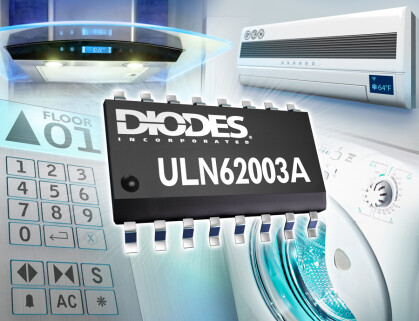How a Robust Peripheral Driver Reduces Power Dissipation
By Benson Liu, Analog Marketing Manager
We are surrounded by sophisticated electronic components; in our homes, cars, and gadgets. But these devices are only useful when they control or respond to something in the real world – whether that is output via a screen or loudspeaker, input from a microphone, sensor, or keyboard, or by controlling a motor or other external device.
While many of these output and input loads can use the same low voltages as logic circuits (typically 5V or less), there are many other applications that require higher voltages and may need more current than a standard CMOS part can provide.
The solution to this problem is the ‘peripheral driver’, which takes a low-voltage, low-current input, and outputs sufficient current at the right voltage for the load. In addition to providing the required output, it must also be robust enough to handle reverse voltage transients from inductive loads when they are switched off.
Peripheral drivers find use across a wide range of applications, including aircon and HVAC systems (both residential and industrial), and home appliances, such as washing machines, cooker hoods, and microwave ovens. They may drive many different loads, including solenoids, relays, stepper and DC brushed motor drivers, LED displays, filament lamps, thermal printheads, and high-power buffers.
If we look at HVAC as a typical application, the key role of the peripheral driver is to drive the compressor expansion valve, which controls how much refrigerant is released into the system’s evaporator. HVAC is a large, growing market – forecasted to expand from $136 billion in 2021 to $234 billion in 2030[1] – and peripheral drivers are a core component.
How does a peripheral driver work? As you would expect, the key components are transistors. Let’s look at a recent example: the ULN62003A is a high-voltage, high-current transistor array containing seven open-drain devices, each rated at 500mA, with all their sources connected to a common ground. The CMOS input signals can be taken directly from a microcontroller or other logic component.

The ULN62003A has DMOSFET output transistors, which means it has an output voltage drop of only 0.2V (much lower than pin-compatible bipolar devices). This reduces its power dissipation, provides additional flexibility to control more devices, and maintains the desired die temperature, thus improving robustness and enabling more devices to be driven from one transistor array.
It has a wider input signal range than competitive devices, which increases flexibility for design engineers and broadens the applications that can be addressed. The wide input range handle signals as low as -1V, allowing the ULN62003A’s GND pin to be used as an overcurrent detection path to further increase system robustness.
Clamping diodes are included on each of its outputs for protection and improved reliability when driving inductive loads. Its 50V output capability makes it suitable for use with typical industrial rails.
The ULN62003A is available in an industry-standard small outline 16-pin package (SO-16), which means that it can be used as a direct replacement for many common peripheral drivers.
For HVAC, domestic appliances, and many other applications, the ULN62003A delivers an unbeatable combination of robustness, flexibility, and low power dissipation.
[1] https://www.grandviewresearch.com/industry-analysis/hvac-equipment-industry